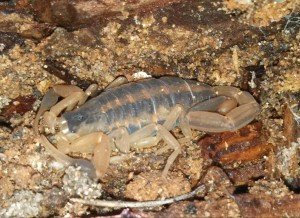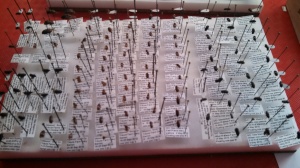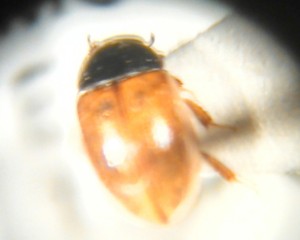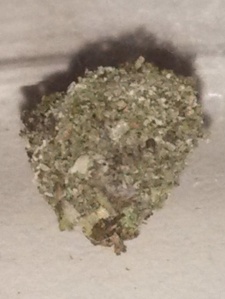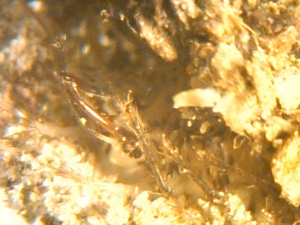I have been lucky enough to find scorpions in my waders, in my boots, in Berlese funnels, and once had them come visit my blacklight rig in Arizona to feed on the insects, but I have not been able to find scorpions just being scorpions. Earlier this week in Bienville Parish, Louisiana, I was lucky enough to encounter a scorpion, Centruroides vittatus, while looking for beetles under logs in a dry, pine woodland on sandy soil.
The weather was kind of cool, and the scorpion did not move at all. I took a couple of really bad photos with my cell phone and replaced the log.
Non-insect arthropods are worthwhile and and groovy. All of the Thomas Eisner millipede work comes to mind. In this case, there were no great scientific discoveries or flashes of insight, just a simple ‘GEE WHIZ!’ and the joy of seeing a bit of wildlife doing what it does (in this case trying to overwinter undisturbed). This is in area with a large feral hog population and I wondered if the hogs are a problem for the scorpions and if that influences choice of overwintering site, but a sample size of one and limited time meant I needed to move on. I have seen scorpions kept as pets and know that they are eaten, but as mentioned above: I just replaced the log. Maybe next time.

